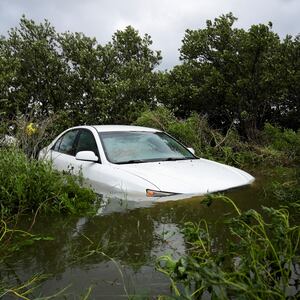Hurricane Debby made landfall as a Category 1 storm in Florida on Monday morning, bringing potentially devastating flooding and storm surges this week.
The hurricane slammed into the coast in the Big Bend region and is expected to move slowly across the northern area of the state before hitting coastal regions of Georgia and South Carolina. Those latter states will face “potentially historic and catastrophic flooding” this week, according to the National Weather Service.
Rainfall of between 10 and 20 inches “will bring unprecedented flooding to some areas in the southeast, with the heaviest rains expected in coastal regions including the metropolitan areas of Savannah and Charleston, forecasters say. “This is a potentially significant and life threatening event,” according to the weather service.
ADVERTISEMENT
Debby, which came ashore with 80 miles per hour winds, is expected to move east across northern Florida before unleashing torrential downpours fueled by unusually warm Gulf waters on Georgia and South Carolina starting Tuesday.
Speaking at a news conference shortly after Debby made landfall, Florida Gov. Ron DeSantis said the storm had followed a track similar to that of Idalia—the Category 4 hurricane that ravaged northern Florida and other areas a year ago. He added that flooding had already led to traffic incidents.
“So far, we have about 143,000 Floridians without power,” DeSantis said, adding that he did not think the outages would reach the levels seen during Idalia. He said some 17,000 linemen “are ready to assist with restoring power immediately” and “3,000 service members from the Florida National Guard” are on standby to help with search and rescue, route clearance, and other parts of the emergency response.
“We’ve got a lot of work ahead of us,” DeSantis said. “There’s going to be a lot of water that’s gonna be dumped throughout the state, and we’re going to see effects of that not just today but in the ensuing days.”






